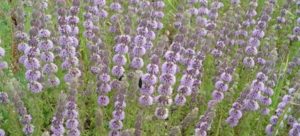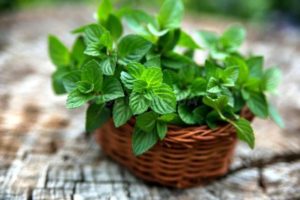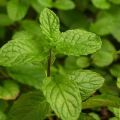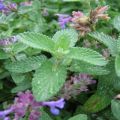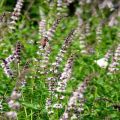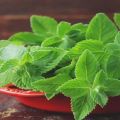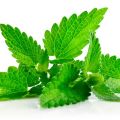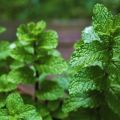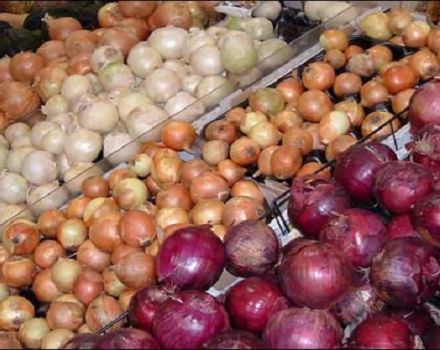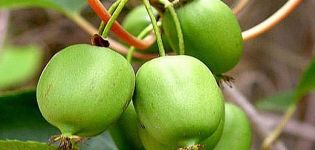Description of the variety of black mint, features of cultivation and care
Black mint is a type of English mint. This is a special hybrid that does not occur in the wild. It is cultivated for medicinal purposes, in cooking, cosmetology.
Specificity of black mint
Black peppermint has a red-violet color of the stems, the color of the leaves is intense green. Perennial is the leader in the content of essential oils, but in terms of aroma intensity it is significantly inferior to white mint. The foliage contains less menthol, so the aroma is much weaker. In our country, black mint species are cultivated.
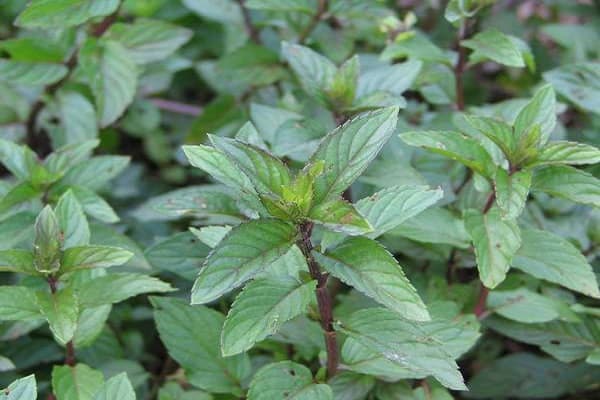
Necessary conditions for growth
This type of perennial is quite hardy, therefore, even a novice gardener can grow and harvest a decent harvest in the first year. The black beauty grows well and develops on any soil composition. For planting, they choose sunny meadows with light partial shade at noon. Perennial does not require additional fertilization.
When to plant mint
Ready-made young growth can be planted during the entire period of active growing season. In order for a young seedling to better take root and adapt to the harsh external conditions, it is planted in cool and moist soil in autumn or winter.
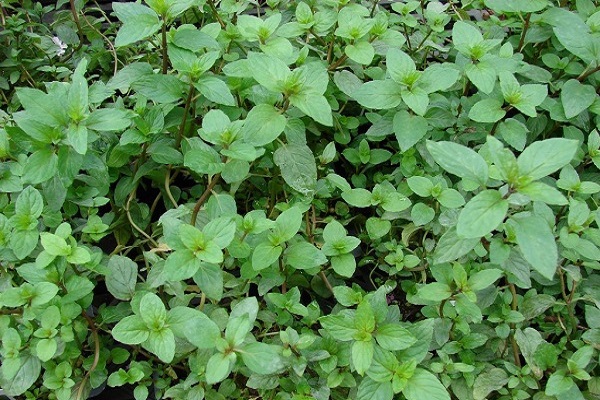
At the end of October, after the final harvest, the selected area is dug up, cleared of weeds and annoying dead wood. High-quality compost is applied to an empty area, leveled with a rake.
If planting of selected seeds for seedlings is required, then it is better to do this in the third decade of March. Strengthened seedlings are planted in May, after the end of return frosts.
If the selected seeds were sown in spring March, then by the end of the sultry summer, young shoots grow to strong bushes.
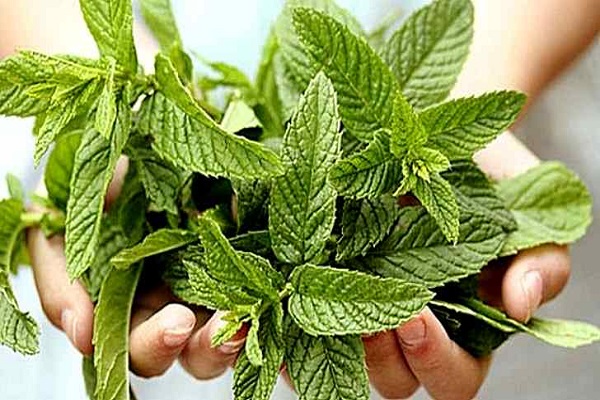
Preparation of planting material
Planting material is obtained in various ways - purchased in a special store or local nursery, collected independently.
Collecting seeds yourself from a perennial is a rather painstaking task. It is important to understand that artificially bred varieties end up with a completely different variety. That is why all the material must be purchased from a trusted store in order to get good germination.
Also, some gardeners purchase ready-made seedlings of life-giving mint at specialized points of sale. As a good material for strong seedlings, an offshoot of a maternal perennial taken from a familiar plot is suitable.The resulting shoot is placed in a glass of water, when its roots develop up to 5 cm in length, then this is a ready-made seedling.
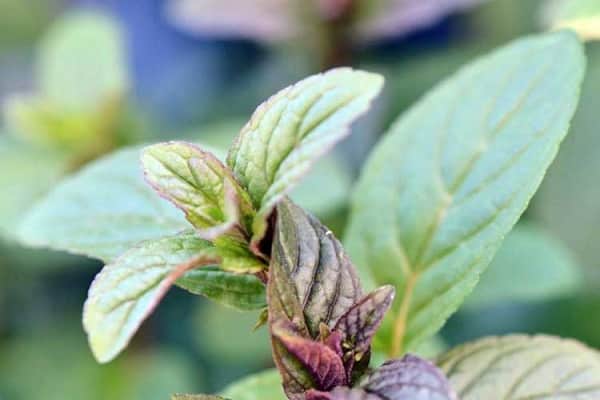
Where to plant a plant
In order for a useful plant to maximize its life-giving qualities, it is necessary to approach with all responsibility the choice of the optimal place for planting it. At the same time, the specified recommendations are followed:
- A fragrant flower is a kind of weed that can fill the entire area, so you need to think over a limiter for it. Slate sheets around the entire perimeter of perennial growth are suitable for this role.
- Plots are selected where buckwheat, legumes, any root crops were previously cultivated.
- When planting young mint, its future neighbors are taken into account: they do not place it near shrubs that are constantly exposed to aggressive chemical treatment. They plant it away from such plants.
- A perennial feels comfortable in a lit area. The midday heat is destructive for its delicate leaves, therefore they choose a semi-shady place, reliably protected from blowing winds.
- The soil for planting a perennial is a fertile, loose composition.
- The perennial will lose its pleasant aroma if it actively grows and develops in an area with a high lime content.
- Unsuccessful neighbors of mint that can spoil its appearance are cucumbers, beets, cabbage.
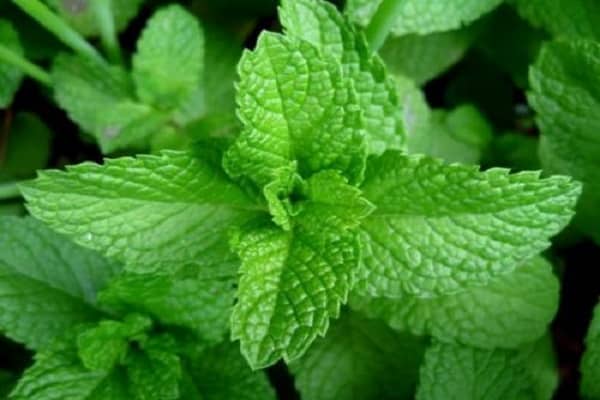
When planting, remember that mint does not tolerate acidic and swampy soil.
How to plant a culture
To plant a life-giving perennial in open ground, make small grooves 5 cm deep. The minimum distance between the planted plants is 30-50 cm. The selected seeds are sprinkled with fertile soil. The soil is compacted and watered abundantly.
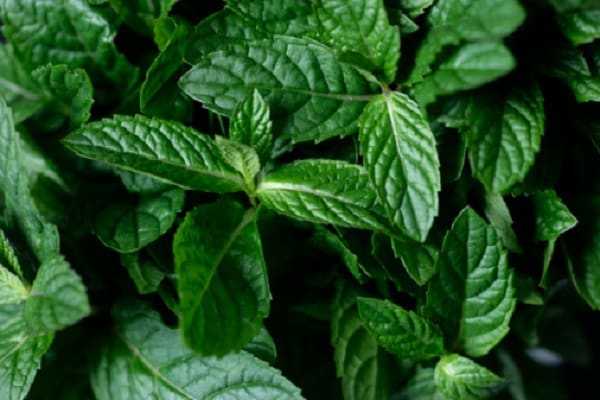
Mint care rules
Any novice gardener can cope with caring for a perennial, since she is unassuming to external conditions. To provide the life-giving mint with a comfortable environment, follow a few valuable tips:
- Provide intensive watering at the beginning of the growing season.
- Loosen the soil regularly to provide oxygen to the roots.
- In spring, feed with high-quality compost and wood ash.
- If there are severe winters in the planting region, then it is better to protect it with spruce branches or leaves.
- Life-giving mint is a perennial that delights with its aroma for more than one year. But every 4 years it is necessary to renew the plant, as its qualities weaken.
- Cardinal root pruning of the bush gives even greater growth during the growing season.
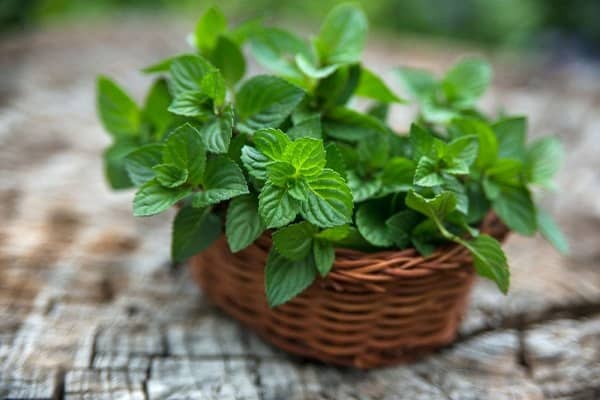
Watering features
A fragrant perennial is able to withstand dry times, so it is enough for him to provide high-quality watering 2 times a month. During drought, more water is used than usual. Perennial does not tolerate overdried soil.
Loosening
Regular loosening of the soil will benefit the perennial. You can loosen the trunk circle once a season or more often.
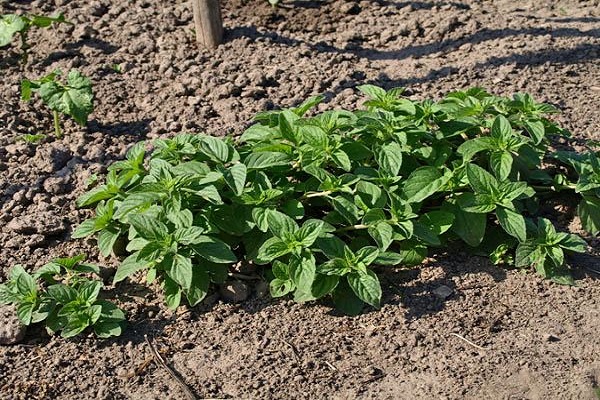
Weeding
During the procedure, do not forget to remove annoying weeds. They can slow down the growth of perennials, so they get rid of them on time.
Diseases
Mint is susceptible to ailments such as powdery mildew and destructive rust. With powdery mildew, white spots appear on the leaves, with rust - orange spots. The affected leaves are cut off, and the perennial is completely treated with potent agents.
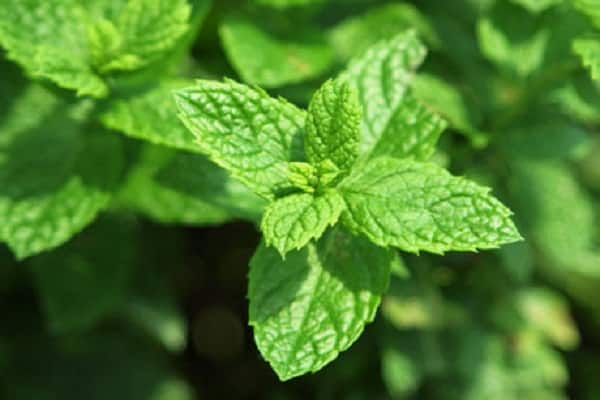
Pests
During the entire growing season, it is necessary to ensure that the perennial is not attacked by pests. Often, unprotected mint is attacked by aphids, various mites, mint leaf beetle, and a dangerous mint flea.
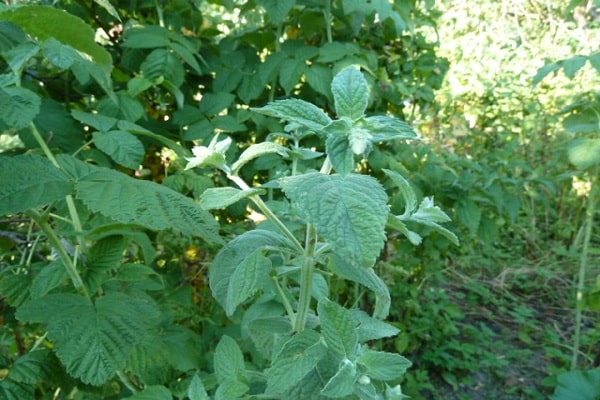
Collection and storage of mint
Harvesting is carried out during the period when the leaves have the highest content of nutrients. The mint is harvested in the midst of a lush bloom. The stems are carefully cut, tied in bunches, suspended in ventilated rooms. They are also laid out on fabric or paper in a thin layer.

